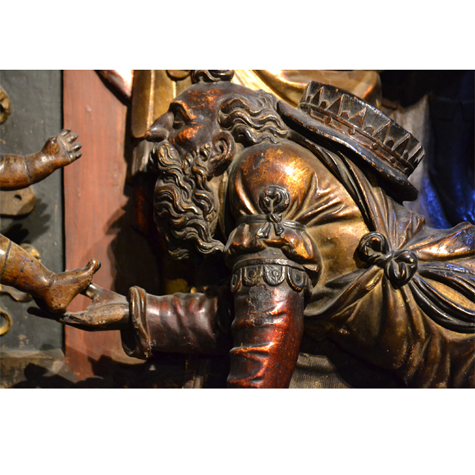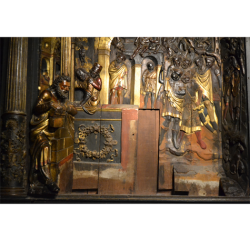Catalogue
THE THREE WISE MEN ALTARPIECE
STYLE
Here on this altarpiece we can appreciate the Flemish tradition of fashioning figures in independent blocks and then assembling them together to make up a scene and the use of either much larger proportions than normally used, or side panels converging towards the rear of the compartments to give a heightened impression of reality and depth. Both of these characteristics are present together with extraordinary attention to detail regarding ambience and distribution as may be seen in the painstakingly constructed backgrounds that follow the precepts of Italian perspective - a very atypical feature in this particular field that was very probably due to the altarpiece having been made towards the end of the manufacturing period. Consistent with this is the structure decorated with a visual repertoire more typical of the Renaissance period with small angels, grottos, fabrics, hanging garlands, etc..
Along the same lines, fluidity in the treatment of beards and hair of the figures, their elegant postures, the soft fall of the pleats and folds in garments and the evolved anatomy of Christ the Infant all stand out.


